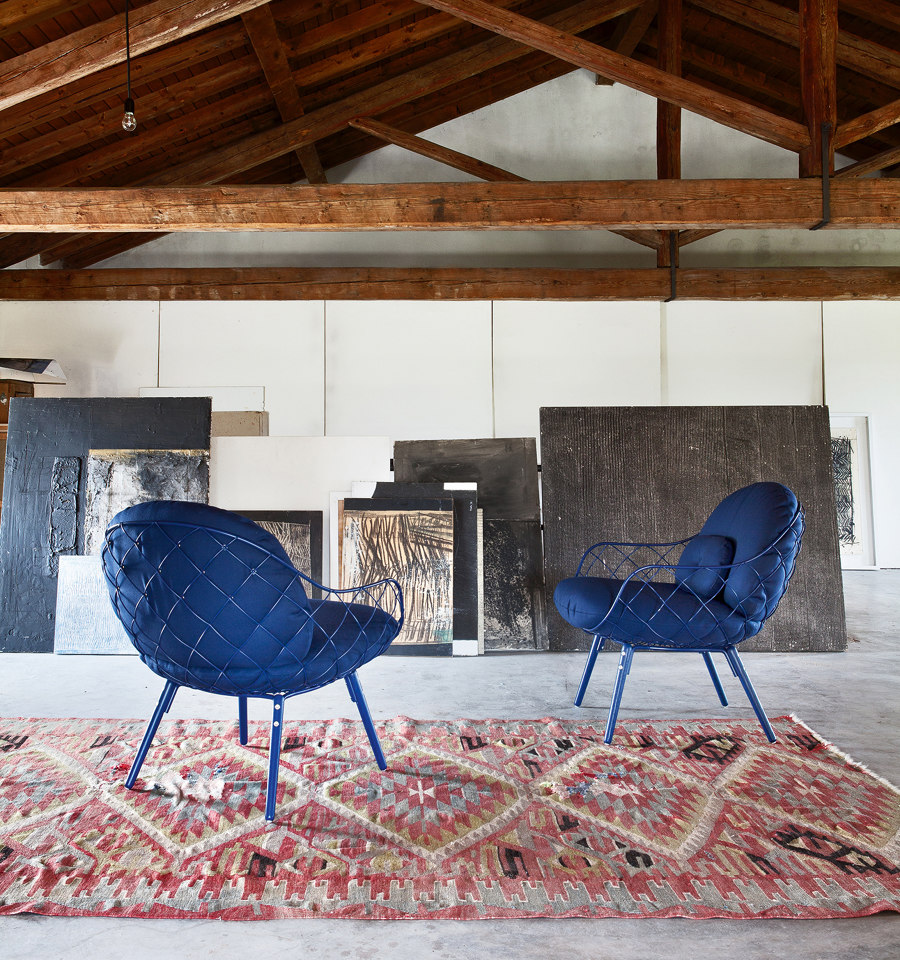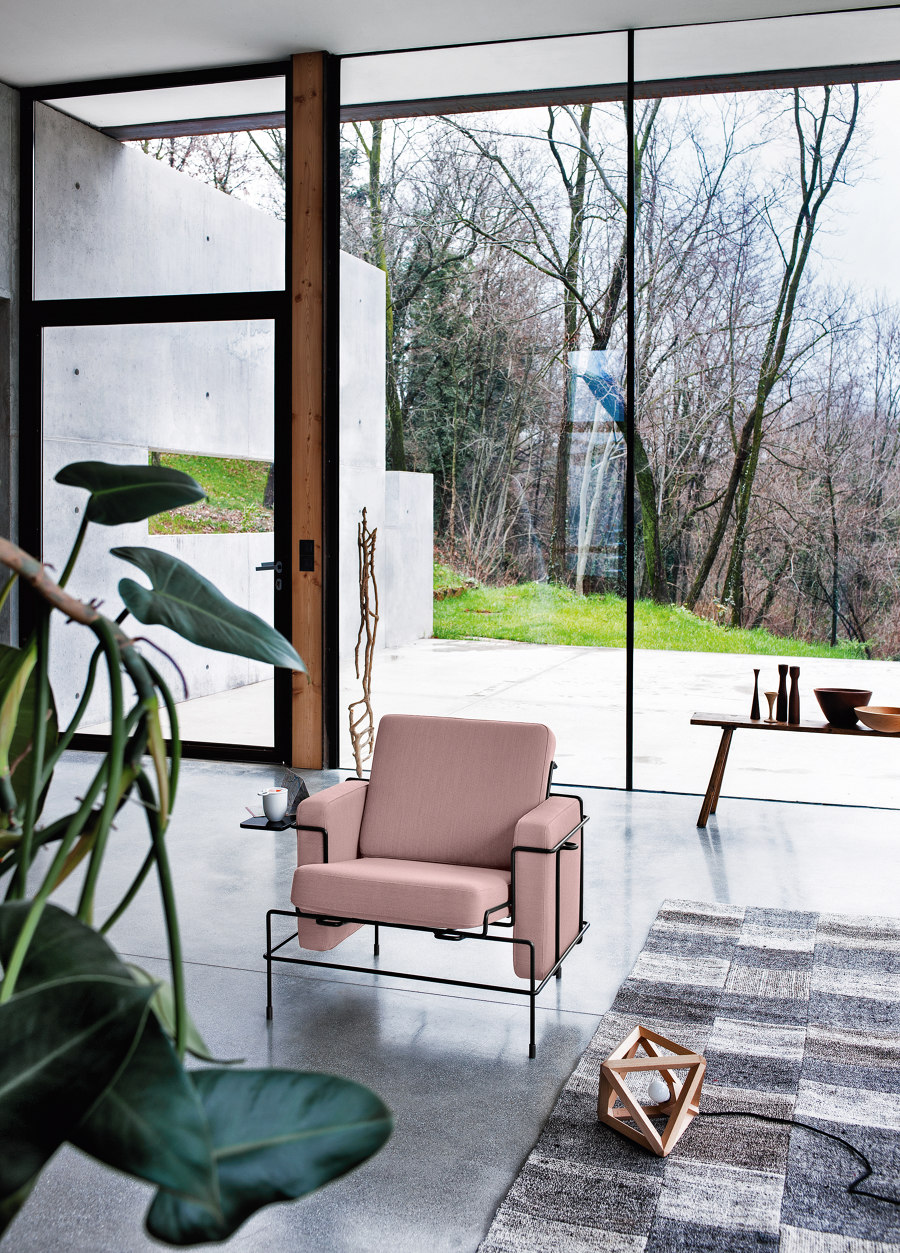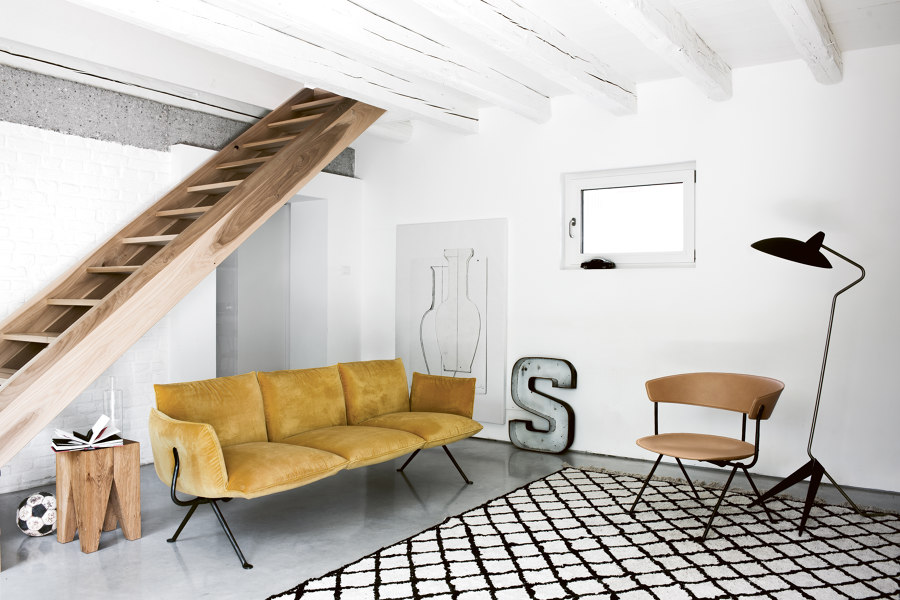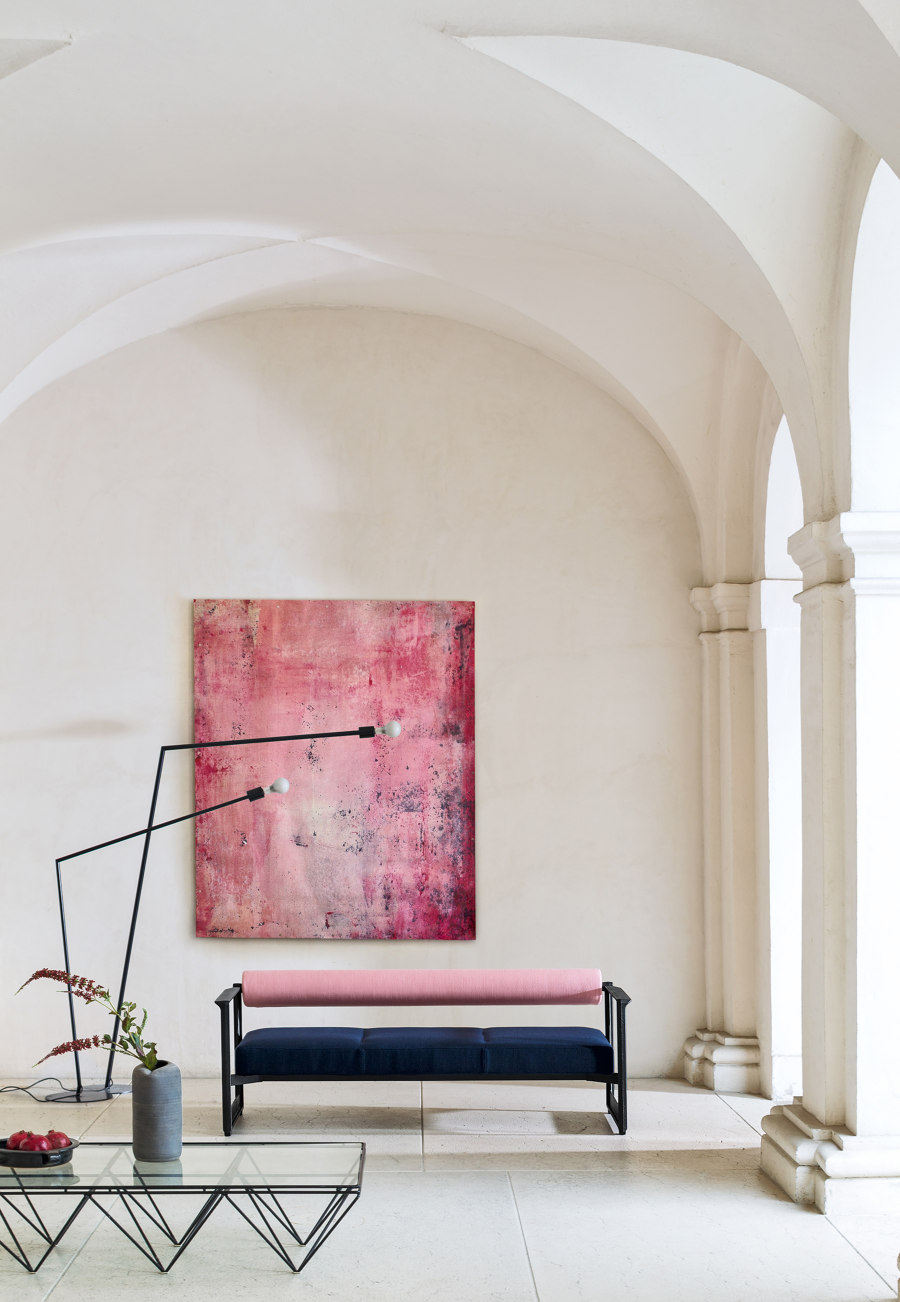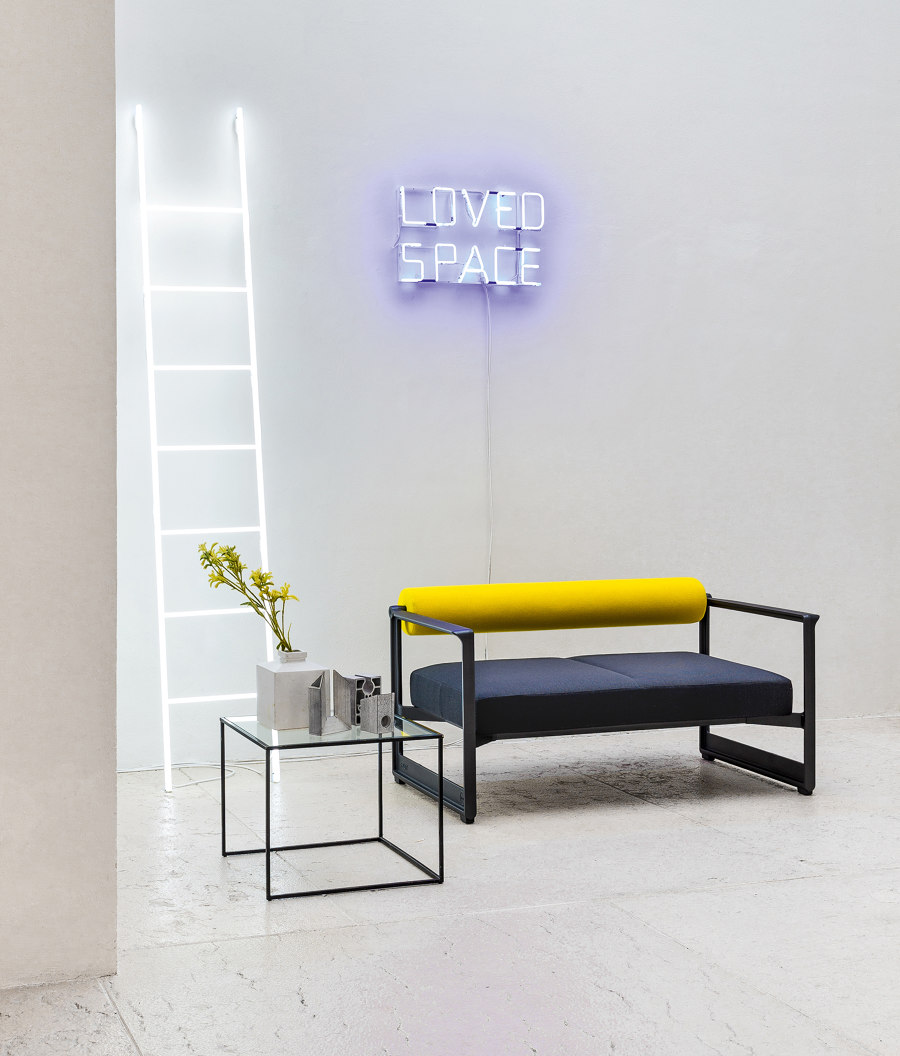Strike a pose: Magis
Storia del Marchio di Dominic Lutyens
Torre di Mosto (VE), Italia
02.04.19
The fruitful collaboration between Italian furniture brand MAGIS and the many design greats of our time often results in playful, unexpected creations suitable for both the living and the contract sector.
The Traffic sofa by Konstantin Grcic is an unimposing design that marries a slender frame with comfortable cushions
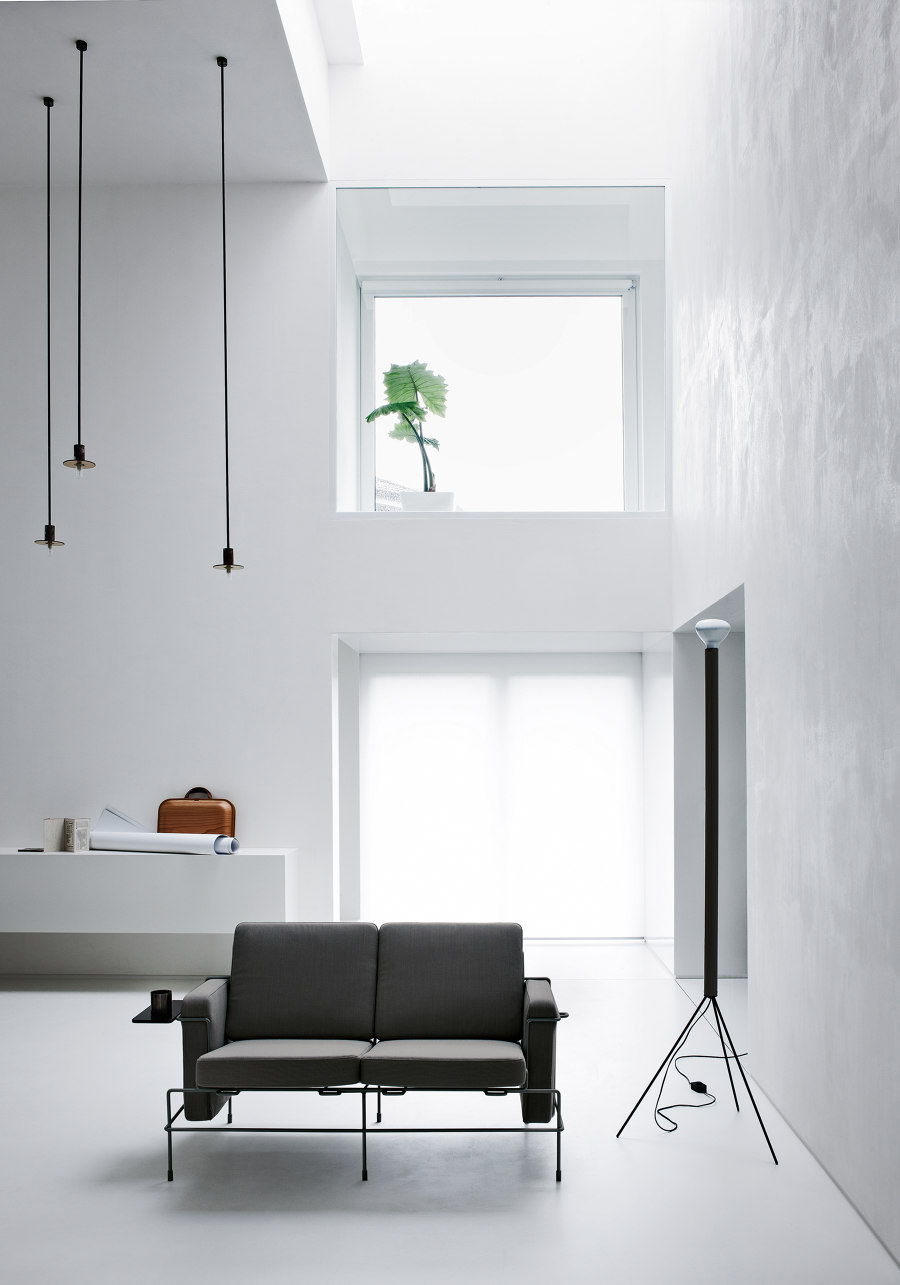
The Traffic sofa by Konstantin Grcic is an unimposing design that marries a slender frame with comfortable cushions
×Early on, Magis, the leading Italian furniture brand founded by Eugenio Perazza in 1976, had to convince the design world of the ingenuity of its original, often flamboyant products against all odds. Take Magis’s Nuovastep of 1984, a short, practical stepladder designed by Andries and Hiroko van Onck, which initially met with resistance from conservative retailers. The stock response was: ‘Stepladders – they belong to hardware stores, surely?’ But soon after it became a huge hit. Another success was the 1997 Bombo stool by Stefano Giovannoni with its enveloping, injection-moulded ABS seat providing back support and a height-adjustable column. Then came the Me Too collection for children that allowed them to enjoy sophisticated, on-trend designs by such big names as Eero Aarnio and Enzo Mari, whose furniture is normally targeted at adults. Ever since, collaborations with imaginative, high-profile designers have been a part of Magis’s lifeblood.
Top: Jaime Hayón’s cocooning Piña chair and footstool for indoor and outdoor use. Above: The Traffic armchair and chaise longue are stylish and practical – their upholstery comprises cushions that easily slot into metal frames

Top: Jaime Hayón’s cocooning Piña chair and footstool for indoor and outdoor use. Above: The Traffic armchair and chaise longue are stylish and practical – their upholstery comprises cushions that easily slot into metal frames
×Magis’s playful, chic furniture, destined for the contract and domestic markets, is feted for its upholstery. A classic example is Spanish designer Jaime Hayón’s multivalent Piña chair for indoor and outdoor use. Its plump cushions made of expanded polyurethane covered in fabric with rounded corners harmonise with the chair’s cocooning, curvaceous frame. Its slender steel-rod shell wittily alludes to upholstery, its 3D diamond pattern evoking button-backed or quilted fabrics. The word Piña means pineapple in Spanish, and its diamond-patterned shell cleverly evokes the fruit’s skin.
Then there is Magis’s Traffic collection designed by Konstantin Grcic, who frequently collaborates with the company. This juxtaposes a slender wire frame with geometric, slab-like cushions. Its structure is practical: Mr Perazza himself has summed up the collection as ‘a set of elements conceived as simple rod cages in which the cushions for the seat, backrest and armrests are easily accommodated’. Yet the cushions’ well-balanced proportions lend the collection a certain elegance. For Grcic, the collection marks a departure from most hard-edged metal-rod furniture, which is not normally associated with comfort. Traffic’s upholstery comes in tan-coloured leather or Kvadrat fabrics in neutral tones and such vibrant hues as flame orange and turquoise, which playfully subvert the utilitarian severity of the frame.
The Bouroullec brothers’ Officina sofa combines informal upholstery with a robust yet delicate-looking metal frame. Above: View the video about the manufacture of Officina
The more informal chairs and sofas from the Officina collection of 2017, dreamt up by Erwan and Ronan Bouroullec, similarly combine comfortably ample cushions supported by a strong metal frame. But in this case, in contrast to Traffic, the cushions – in expandable polyurethane with removable covers – look more separate and independent from the frame, more casual.
The frame of another piece, the Brut sofa, is also made of a robust metal – cast-iron. While Brut’s upholstery is as simple as the frame, its softness contrasts with the heaviness and rawness of the metal structure, which gives the collection its name (brut means raw in French). Also contrasting with the metal is the upholstery, which is available in funky, pop hues, including apple green and pastel pink; the backrest and seat can also come in different colours, creating a two-tone effect. Otherwise, the upholstery is available in neutral tones, allowing Brut to adapt to all styles of interior. This highly robust, durable collection is intended mainly for public areas, such as waiting rooms, shops and offices.
The solid, heavy frame of Grcic’s Brut sofa is softened by deep cushions and a cylindrical backrest; these upholstered components also come in playfully contrasting colours

The solid, heavy frame of Grcic’s Brut sofa is softened by deep cushions and a cylindrical backrest; these upholstered components also come in playfully contrasting colours
×Magis’s furniture extends to many other product categories – from tables to shelving systems – also suitable for the contract market. These grace bars, restaurants, universities and airports worldwide. What’s more, the products can be customised with a broad spectrum of finishes to ensure they meet specific requirements and blend well into all settings.
The myriad forms of Magis furniture – other examples include Thomas Heatherwick’s rotating chair Spun and Marcel Wanders’ softly upholstered Cyborg armchair – emphasise its flexibility and ability to inject individuality into any space.
© Architonic




